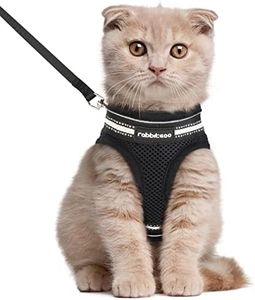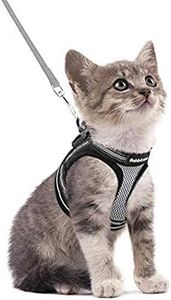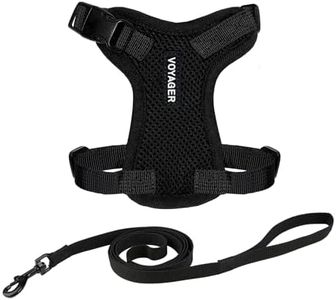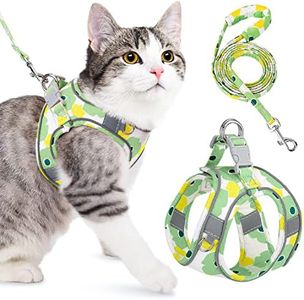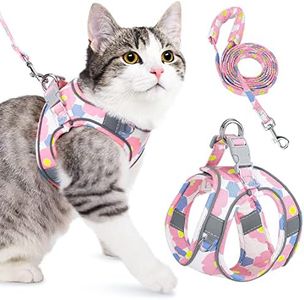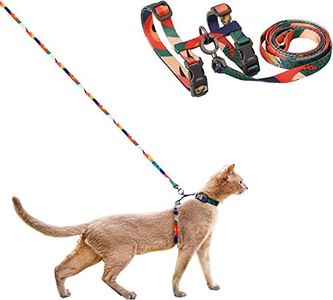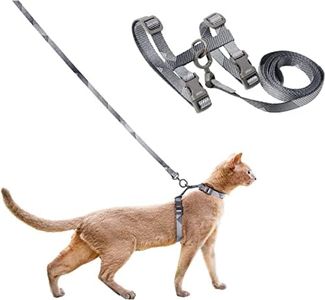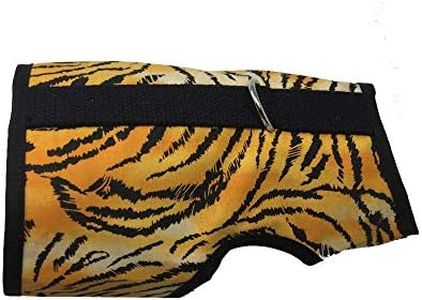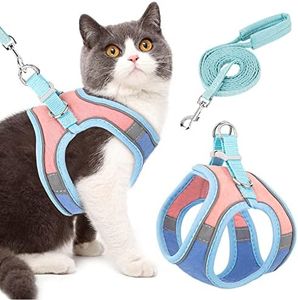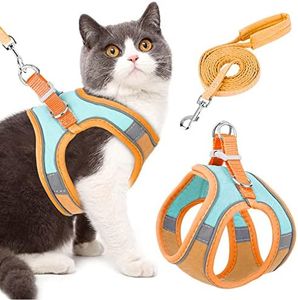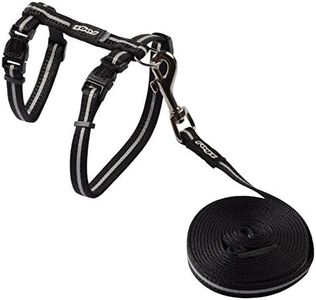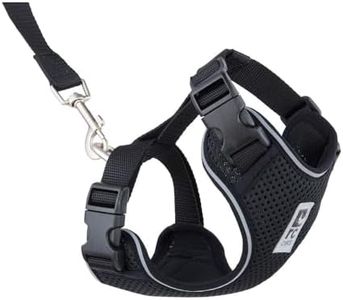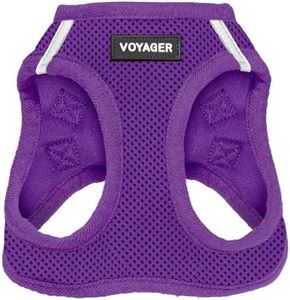We Use CookiesWe use cookies to enhance the security, performance,
functionality and for analytical and promotional activities. By continuing to browse this site you
are agreeing to our privacy policy
10 Best Cat Harness
From leading brands and best sellers available on the web.Buying Guide for the Best Cat Harness
Choosing a cat harness can make outings safer and more enjoyable for both you and your pet. A good harness should be comfortable for your cat, secure enough to prevent escape, and easy for you to use. Since every cat is different in size, temperament, and training, it's important to match the harness to your cat’s specific needs, ensuring safety and comfort during walks or trips outside.Type of HarnessThere are mainly three types of cat harnesses: H-style, vest-style, and figure-8. H-style harnesses use straps that go around the neck and chest and are connected by a strap along the back. Vest-style harnesses cover more of the body and tend to distribute pressure more evenly, often being more comfortable for cats who dislike thin straps. Figure-8 harnesses loop in a figure-8 around your cat’s neck and chest and are usually more adjustable but can be less secure. Choose a type that fits your cat’s behavior—shy or escape-prone cats tend to do better with vest-style harnesses, while mellow cats might be fine with lighter H-style or figure-8 versions.
Size and AdjustabilityGetting the right size is crucial for comfort and safety. Harnesses typically come in various sizes based on chest girth measurements. Look for adjustable straps, which help you customize the fit to your cat's unique shape. Harnesses that are too loose can allow your cat to wriggle out, while those too tight can cause discomfort or restrict movement. To select the right size, measure your cat’s chest behind the front legs and choose a harness with adjustable features within that range—ensure you can fit one or two fingers under the straps once worn.
MaterialThe material affects both comfort and durability. Most cat harnesses are made from either nylon, mesh, or soft fabric. Nylon is lightweight but may not be as gentle on sensitive skin. Mesh and padded fabrics are softer and distribute pressure well, which is especially good for longer wear or timid cats. Picking a soft, breathable material is generally best for comfort, while considering durability if your cat may chew or scratch at the harness.
Ease of UseEase of putting on and taking off the harness makes a big difference, especially if your cat is new to harnesses or impatient. Simple buckle or Velcro closures are easier for quick fitting, but some might require your cat’s cooperation more than others. Think about your cat’s temperament: nervous cats may prefer a harness that’s quick to put on, while more tolerant cats may be okay wearing a harness with extra buckles or adjustments.
SecuritySecurity refers to how well the harness prevents escape. Look for design features such as snug fit around both neck and chest, double closures, and sturdy D-rings for attaching a leash. Cats known for being escape artists need harnesses that are specifically designed to be escape-proof, often with additional safety straps or wider coverage. If your cat is new to harnesses or tends to pull, prioritize designs that have been tested for security and strength.


